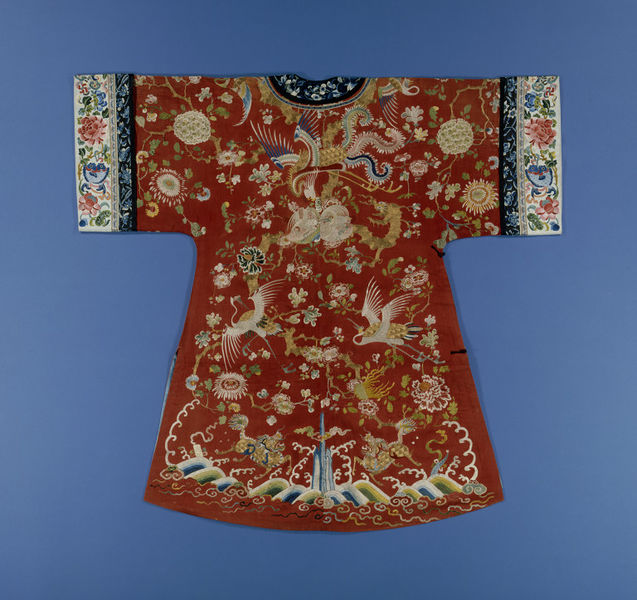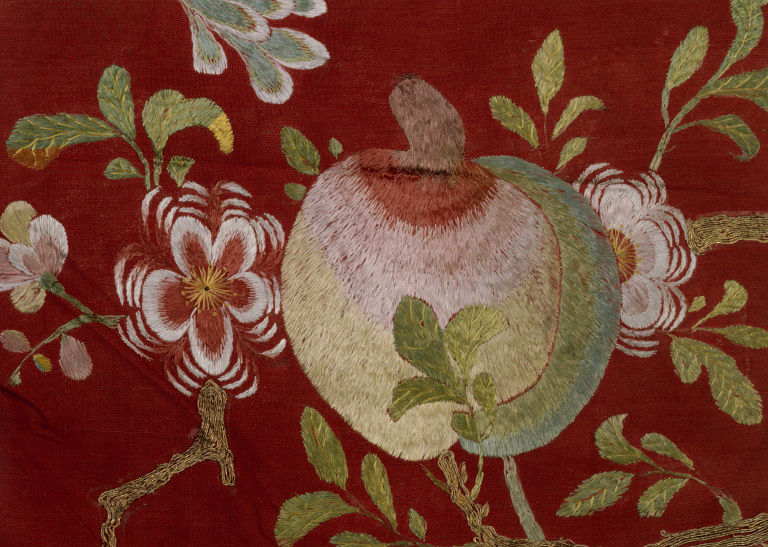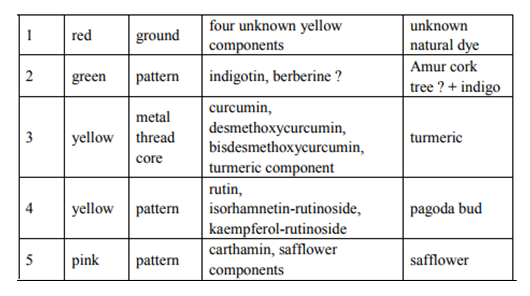V&A T.184-1948, Embroidery on gauze-banded plain weave silk robe, China (late 17th century-18th century)
Artifact Information
The robe is made of gauze-banded plain weave silk with embroidery. This robe is a woman's garment that may be the earliest non-ecclesiastical Chinese garment in the Museum. The grand is a rich red silk that has horizontal bands of fruiting pomegranates (symbolizing a woman with many kids) in gauze weave running across the fabric at widely spaced intervals. Over this, there is shiny embroidered decoration of fruits, flowers, birds and mythical beasts [1].
Victoria and Albert Museum, London, UK T.184-1948
Summary of results
Traditionally used Chinese dyes, pagoda tree buds, tumeric and safflower has been identified as the dyeing sources of this Chinese woman's robe.
HPLC profile
Identified compounds
References
[1] https://collections.vam.ac.uk/item/O72026/robe-unknown/ [2]



